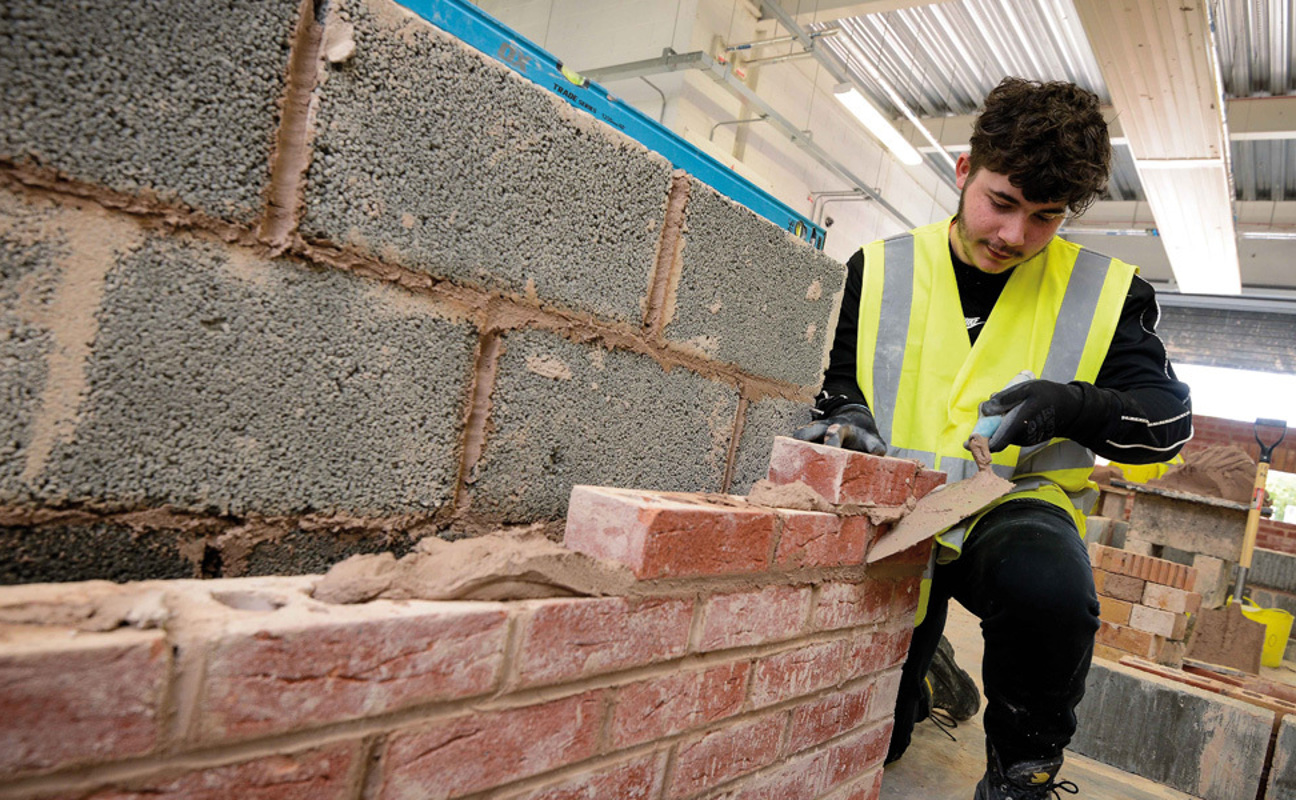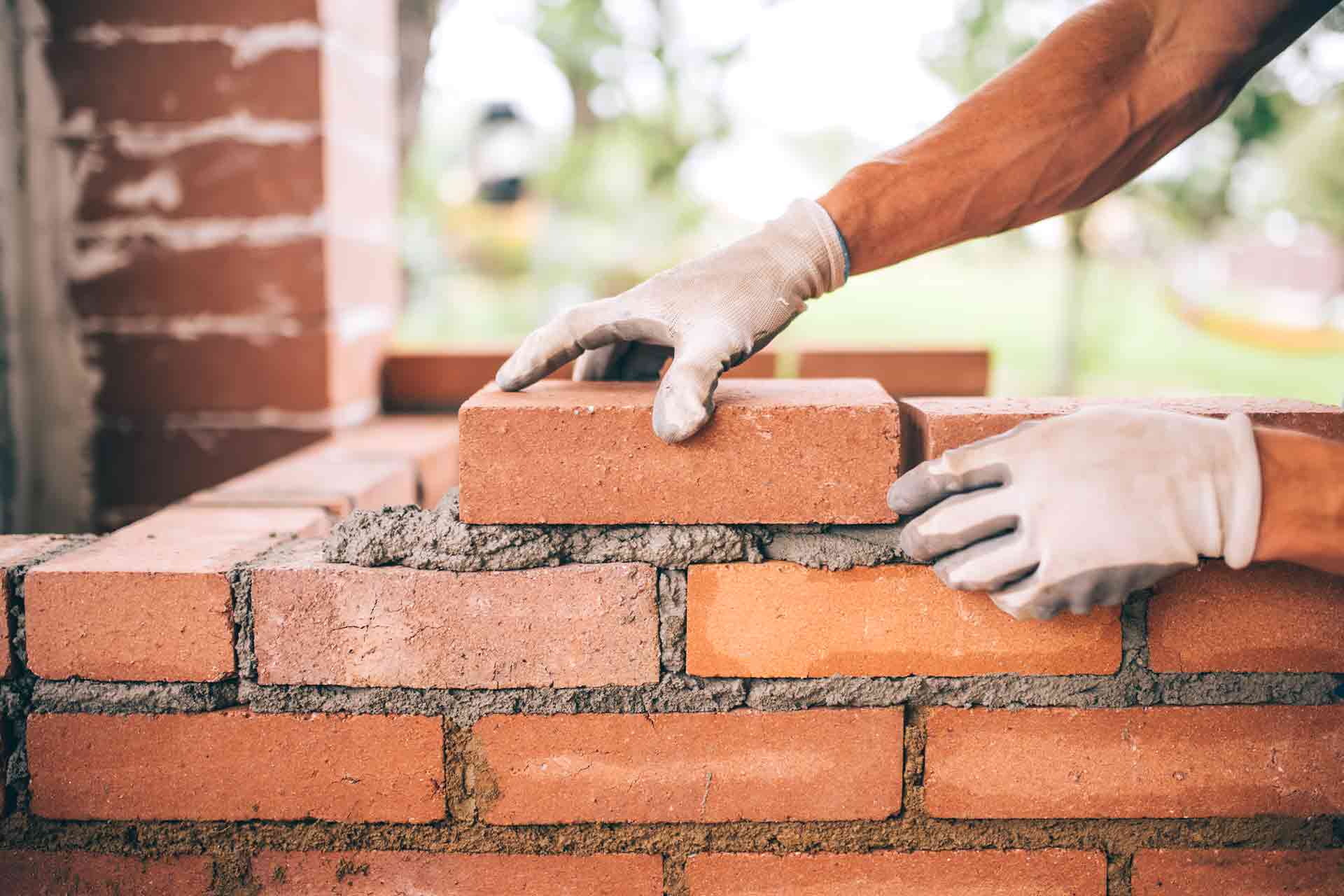Some Ideas on Bricklayer Auckland You Should Know
Table of ContentsThe smart Trick of Bricklayer Auckland That Nobody is DiscussingThe Single Strategy To Use For Bricklayer Auckland3 Easy Facts About Bricklayer Auckland ExplainedThe 3-Minute Rule for Bricklayer AucklandNot known Details About Bricklayer Auckland More About Bricklayer Auckland
Blocks ought to constantly be stacked on planks; never ever load them straight on irregular or soft ground. Do not keep bricks on scaffolds or runways.Except where piled in sheds, block stacks should never be greater than 7 feet high. When a heap of brick reaches an elevation of 4 feet, it should be tapered back 1 inch in every foot of height over the 4-foot degree. The tops of block heaps should be kept level, and the taper need to be kept throughout unpiling operations.
Structural bond describes how the private stonework devices interlock or link with each other right into a single architectural unit. You can attain structural bonding of brick and also floor tile wall surfaces in among the adhering to three methods: Overlapping (interlocking) the stonework units. Embedding steel ties in attaching joints. Using cement to adhere adjacent wythes of stonework.
The 8-Second Trick For Bricklayer Auckland
Pattern bond refers to the pattern created by the stonework devices as well as mortar joints on the face of a wall (Bricklayer Auckland). The pattern might arise from the architectural bond, or it might be totally ornamental as well as unconnected to the architectural bond. Number 4-4 shows the 6 standard pattern bonds alike use today.
The running bond is the most basic of the 6 patterns, containing all cots. Since the bond has no headers, steel connections typically develop the structural bond. The running bond is used greatly in cavity wall construction, brick veneer wall surfaces, and dealing with floor tile wall surfaces made with added large stretcher ceramic tile.
Great blocks need to not disintegrate when placed in water. Just when fat lime or clay mortar is used or when one is compelled to use bricks that are not well scorched, this saturating rule has to be relaxed.
Excitement About Bricklayer Auckland
In all cases, bricks ought to not be managed in baskets or in any kind of other mode which will damage the sharpness of their sides. Exactly how do you build a masonry wall surface? The operation of bricklaying in regular basic job is as complies with. A layer of mortar is spread to cover the complete width of the wall surface for an ideal length of the reduced training course.
We press the side bulging mortar in firmly to be degree with the face of the wall surface if it is to be left unplastered. In the click to investigate common method adopted by numerous masons, a row of blocks is very first positioned on a slim layer of bed mortar leaving the cross joints empty.


The walls are raised absolutely plumb. All training courses are laid genuinely straight as well as all upright joints truly vertical.
The Greatest Guide To Bricklayer Auckland
For this objective, a wooden straight edge with graduation offering a thickness of each brick program including joint can be used for guidance. For a thick wall, the above procedure is duplicated in addition to both faces of the wall surface and also the indoor filling up blocks for the thick wall surface are stocked a similar way.
This procedure of filling up open joints is termed flushing-up. It is mistakenly omitted for a number of courses on some badly-executed tasks and only done later on (not after every course) in an inefficient manner. It is not a great method as well as needs to be prevented as it is essential that every training course ought to be purged approximately the level if great work is needed.

About Bricklayer Auckland
The mortar increasing and loading the vertical joints totally and develops an exceedingly solid and solid wall surface. This is recognized as larrying. For a rat catch bond job (as in the construction of dental caries walls), if the mortar is placed carelessly on the brick, several of it will fall into the cavities and will be wasted.
The face of the brickwork will also be cleansed of all mortar droppings, etc(ii) When situations make it required to carry on a part of a structure in unequal courses, the job shall be developed back see here (according to the bond made use of on the job) at an angle not steeper than 45 degrees so as to guarantee an uniform and efficient bonding.
Otherwise, for faces to be plastered, ending up of the face joints ought to be performed as reviewed in listed below (This is very crucial.)(iv) The wall surfaces must be consistently raised all over not leaving any kind of component one metre (three feet) reduced than the various other - Bricklayer Auckland. A day's job need to not be even more than 1.
The Definitive Guide for Bricklayer Auckland
When the facework is to be later plastered or the joints alone are to be pointed, the joints have to be raked while the wall is being built. Bricklayer Auckland. It ought to be raked to a minimum depth of 12 mm by a raking tool throughout the development of the job itself, when the mortar is still environment-friendly.
If smudging or aiming is not imagined, the joints must be struck flush and also ended up at the time of laying itself, as currently specified. Half-brick wall surfaces have a tendency to split unless care is absorbed its construction. Brickwork in half-brick stonework is to be carried out with cots in 1: 5 mortar.
Comments on “8 Easy Facts About Bricklayer Auckland Explained”